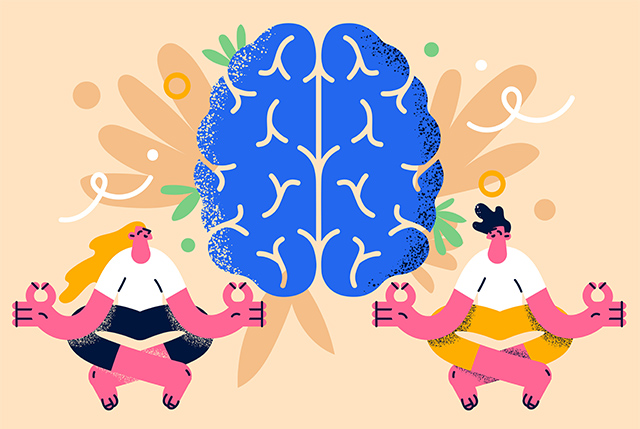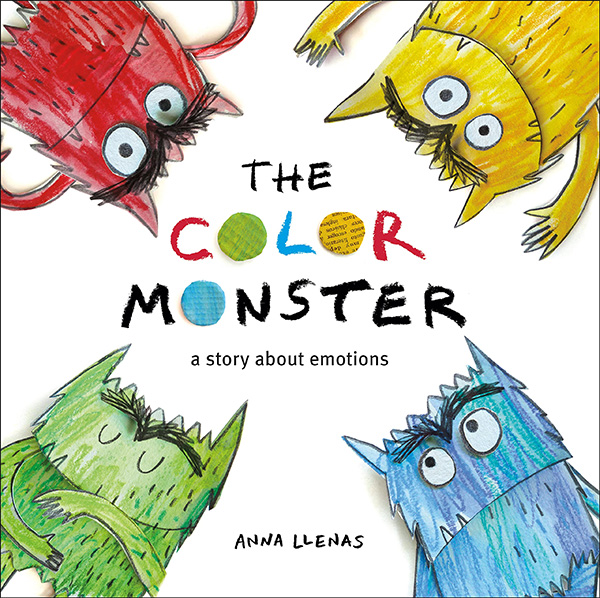In my other life, I’m a social worker who has spent most of my career helping young people with mental health concerns. Since May is Mental Health Awareness Month, I thought this would be a great time to share some information about how to talk about mental health and wellness with your child, and why it’s important to do so.
As parents, we’re responsible for caring for our children’s health – and that means mental as well as physical. Mental health is an essential component of overall wellbeing, affecting every aspect of our lives including our emotions, thoughts, behaviours, and relationships. Mental wellness is undeniably crucial across the lifespan, but it’s even more important to focus on mental health for children as it shapes their early development and has far-reaching impacts on their future success and wellbeing.

It’s important to start having these conversations about mental health with your child from an early age to help them develop emotional literacy, build resilience, and learn healthy coping strategies. Having open, honest conversations about mental health with your child will help them understand and manage their own emotions and behaviours, as well as recognize and support others who may be struggling. These conversations can also help reduce the stigma surrounding mental health issues, leading to increased awareness, acceptance, and access to treatment.
Introducing the topic of mental health can be challenging, especially if your child is young and may not have a full understanding of emotions and mental health yet. Fortunately, there are several strategies that you can use to make the conversation easier and less daunting.
Read more: 12 Simple Ideas to Help Your Child Calm Down
Read more: 3 Simple Exercises to Help Your Child Develop Emotional Wellness
Establish safety
Start by creating a safe and supportive environment. Make sure your child knows they can talk to you about anything and that you will listen without judgment. Let them know it’s okay to talk about their feelings and to ask for help if they need it. By starting with an open and honest relationship, you will lay the foundation for future conversations about mental health (and everything else!).
Use age-appropriate language
When introducing the topic of mental health, it’s important to approach it in a way that’s developmentally appropriate for your child’s age and understanding. Use simple, concrete, age-appropriate language. You can start by asking open-ended questions to gauge their understanding of emotions and feelings like, “How are you feeling today?” and “What makes you happy/sad/angry?” This can help lay the groundwork for a more in-depth conversation about mental health.

Use concrete examples
Talk regularly about feelings and emotions, and use examples from your child’s daily life to help them understand. For example, you can ask your child how certain events they’ve experienced make them feel them feel. You can then use those feelings to introduce the idea that our emotions can affect our thoughts and behaviours.
Everyone has feelings and emotions that can sometimes be difficult to manage. I’m sure you and your child can think of at least a couple of examples when they’ve experienced that! Reassure your child that it’s normal to experience sadness, anger, fear, and anxiety from time to time, but also make sure they know to tell you if they start having those feelings more often.
Sharing your own experiences with mental health can also help normalize the conversation and show your child that it’s okay to talk about these topics. You can tell them about a time when you felt stressed or anxious and how you coped with those feelings. By being open and honest, you create a sense of trust and connection with your child.
Offer books and media
There are many books, movies, and TV shows that can help introduce the topic of mental health to children. These resources can be a great way to start the conversation and help your child understand complex concepts in a more accessible way. For example, you can read a book together about a character who experiences anxiety or depression and talk about how they might feel and how they can get help.
The Color Monster is a fantastic way to introduce emotions and help toddlers and preschoolers identify their own feelings. Older kids with anxiety might relate to Wilma Jean the Worry Machine, and A Little Spot of Sadness is a wonderful resource for kids who need help managing sadness and disappointment.
Emphasize self-care
Teaching your child about self-care and healthy coping strategies can help them develop the skills they need to manage their mental health. You can talk about the importance of getting enough sleep, eating healthy food, regular exercise, and taking breaks when they need them.
As your child gets older, help them add more coping strategies to their toolbox such as meditation, going outside, spending time with friends, reading, or listening to music. By emphasizing these positive behaviours, you can help your child build resilience, reduce stress, and develop a sense of control over their mental health.

Provide resources
Finally, let your child know that there are resources available if they ever need help with their mental health. You can provide them with information about counselling services, crisis hotlines, or online resources that they can turn to if they need support. By being proactive and providing resources in advance, you can help your child feel empowered and supported.
In Canada, the Kids Help Phone offers online mental health resources as well as 24/7 support for any child or teenager by phone 1-800-668-6868 or text 686868. In the United States, the 988 Suicide & Crisis Lifeline is available for anyone to access support via phone or chat.
To sum everything up, talking about mental health with your child is an important and essential part of their overall wellbeing. By introducing the topic in a safe and supportive environment, using age-appropriate language and resources, and emphasizing the importance of self-care, you can help your child build resilience and develop healthy coping strategies for life. Remember, you are not alone, and there are many resources available to support you and your child along the way. Keep the conversation open and ongoing, and let your child know that you are always there to listen and support them.
Disclosure: This post contains affiliate links. As an Amazon Associate I earn from qualifying purchases, at no additional cost to you.









Leave a Comment